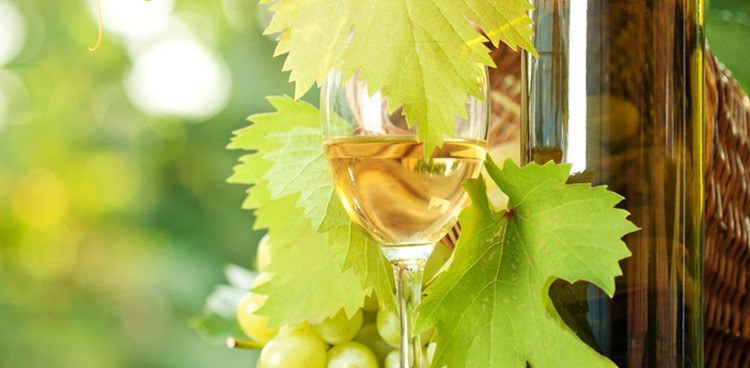
The lush, green hills of northwestern Portugal have two things in abundance: grape vines and goats. So it’s no surprise that the locals often pair cheese made from area milk with the homegrown wine, Vinho Verde. It’s just that no one ever talks about it.
See, Vinho Verde, for the most part, is a simple wine: Its name means “green wine,” an allusion to its freshness, as it’s typically drunk young, sometimes so much so that it has a little effervescence. It’s made in the cool, Atlantic Minho region, mostly from alvarinho—the same grape as the albariño on the Spanish side of the border, but lighter, crisper, and saltier in this clime—often blended with loureiro, another local grape, for a fillip of florality, or trajadura for citrus and steel, and arinto for minerality. Typically vinified in stainless steel rather than oak barrels, it’s one of the most refreshing wines in the world.
Here in the United States, good versions can be had for as little as $7. Great ones run $20 or $30. These days, you can find single-variety ones, too. The loureiro versions tend to be the most delicate, made to enjoy immediately, while those crafted entirely from alvarinho are bigger and broader, and can even gain complexity with age. You might even run into a red version, made from the vinhão grape; these tend to be light and bracingly acidic, made for downing with roast suckling pig—or, as it happens, cheese.
Light and Easy
Fresh, young Vinho Verdes go best with fresh, young cheeses, especially the goaty kind. Think farmer’s cheese, chèvre, or small bloomy-rind pyramids—with or without a dusting of herbs and spices.
- Chapel Hill Creamery Dairyland Farmers Cheese + Casal Garcia Vinho Verde
- Capriole Goat Cheese Piper’s Pyramide + Quinta da Aveleda 2013 Vinho Verde
- Le Chèvrefeuille Fleur Verte + Quinta de Gomariz 2012 Loureiro Vinho Verde
Single Vineyard and Reserve
When yields are kept low, whether via farming or simply because the vines are old, wines become more concentrated. Some Vinho Verde from special vineyards or old vines have enough substance to withstand a few years of aging—or to take on a buttery cow’s milk cheese. Due to their high acidity and saline flavors, these wines also do well with salty cheeses.
- Mystic Cheese Co. Sea Change + Antonio Lopes Ribeiro 2012 Casa de Mouraz Biotite Vinho Verde
- Casa Lusa Cabra Raiano + Soalheiro 2012 Alvarinho Vinho Verde
- Queijo de Nisa PDO + Anselmo Mendes 2012 Muros Antigos Alvarinho Vinho Verde
Rosé and Red
It’s not often that a pink or red Vinho Verde turns up on this side of the Atlantic, but if you find one, snag it. The high acidity of the Portuguese grapes and the cool temperatures of the growing region ensure that even the darkest-color reds are palate-whettingly juicy and bright, perfect for drinking with rich foods and cheeses. Pour a rosé with a watermelon and feta salad, or beets and goat cheese.
- Haystack Mountain Goat Dairy Feta + Quinta da Raza 2013 Dom Diogo Padeiro Rosé Vinho Verde
- Matos Cheese Factory St. George + Aphros Vinhão Espumante Super Reserva Bruto
How to Taste
Since much of what we consider “tasting” is actually smelling, start the tasting with your nose: If you’re tasting several wines, give each of them a swirl and a sniff to get an idea of their differences; then order them by intensity. Taste, adjusting the order as necessary. Then move on to the cheese, tasting each one first without the wine. Once you have a good idea of what you are working with, you can play: Take a bite of cheese, then a sip of wine, and repeat to find the best matches. If everything begins to taste the same (or if one pairing really clashes), take a break with a piece of plain bread or a cracker.
Feature Photo Credit: Sunny studio | Shutterstock




